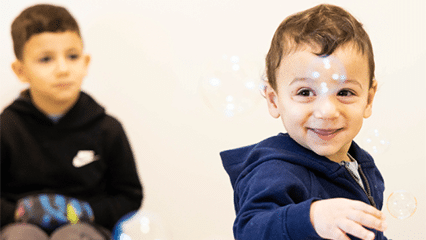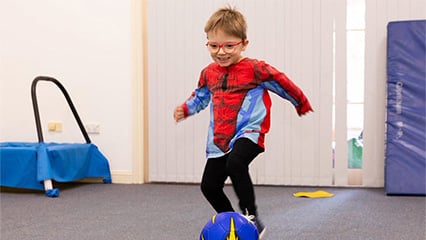Goal directed training (GDT) is one-on-one activity-based therapy that can help you to achieve your goal in a set timeframe.
GDT is Cerebral Palsy Alliance’s therapy approach to improving independence and overall functional performance. It’s an evidence-based ‘green-light’ intervention, which means research has proven that it is very effective.
GDT works very well for:
Goal directed training is for any age, any GMFCS level and any goal!
You choose and set your goal and then work together with your therapist one-on-one for about 14 to 25 hours, depending on your goal. And regular practise at home and/or in the community.
GDT is activity-based therapy. It can be delivered over a short period of time, or several weeks or months, depending on your goals and abilities.
To be successful, it is important that:
You will work one-on-one with our team of physiotherapists, occupational therapists, speech pathologists or exercise physiologists to set and achieve your goal. Big goals may be broken down in achievable parts and practised until the big goal is achieved.
Research shows that we need to practise a task many times to be capable and confident. It is important that activities related to a goal are practised in everyday real-life settings such as at home, school or out in the community. Therapists will provide coaching for you or your child and family to help practise the task at home.
"*" indicates required fields
We will respond as soon as possible, between Monday-Friday 9:00am - 5:00pm

